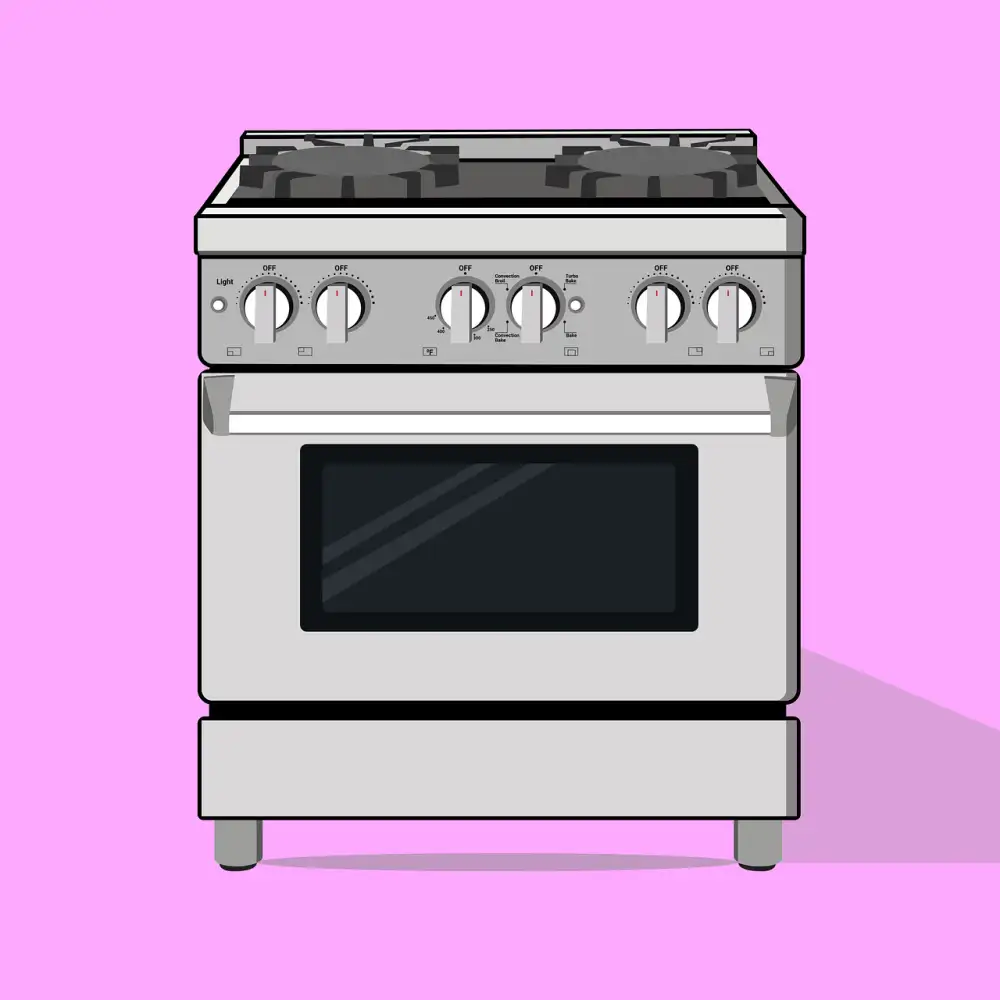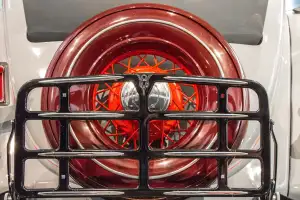Mastering the Art of Cooking: A Step-by-Step Guide on How to Use a Convection Oven at Home

Convection ovens have revolutionized the way we cook, offering faster and more efficient cooking results. Unlike traditional ovens, which rely on radiant heat, convection ovens use a fan to circulate hot air evenly throughout the oven cavity. This constant circulation of hot air ensures that food is cooked evenly and quickly, resulting in perfectly browned and crispy dishes every time. Whether you're a seasoned chef or a novice cook, mastering the art of cooking with a convection oven will open up a world of culinary possibilities in your own kitchen.
Understanding the Basics of a Convection Oven
A convection oven is a kitchen appliance that utilizes a fan and exhaust system to circulate hot air evenly around the food. This constant circulation of hot air ensures faster and more even cooking, resulting in perfectly cooked dishes.
The main difference between a conventional oven and a convection oven lies in how they distribute heat. In a conventional oven, heat rises from the bottom and gradually spreads throughout the oven cavity. However, in a convection oven, the fan helps to distribute the heat more efficiently, reducing cooking time by up to 25%.
Convection ovens also have an additional heating element located near the fan, which helps to further enhance the circulation of hot air. This feature allows for better browning and crisping of foods.
It's important to note that convection ovens can be used for both baking and roasting. The circulating hot air ensures that baked goods rise evenly and develop a beautiful golden crust. When it comes to roasting meats or vegetables, convection ovens help to lock in moisture while achieving a crispy exterior.
By understanding these basics, you can make the most out of your convection oven and elevate your cooking skills to new heights.
Preheating the Convection Oven
Before you begin cooking with a convection oven, it is essential to preheat it. Preheating ensures that the oven reaches the desired temperature before you start cooking, resulting in more consistent and even cooking.
To preheat your convection oven, simply set the desired temperature and allow it to heat up for about 10-15 minutes. This time may vary depending on your specific oven model, so refer to the manufacturer's instructions for precise guidelines.
During the preheating process, make sure to remove any racks or accessories from the oven. This allows for better airflow and ensures that the heat circulates evenly throughout the cavity.
It's important to note that convection ovens often heat up faster than traditional ovens due to their fan-assisted technology. Therefore, keep a close eye on the oven as it preheats to avoid overheating or burning your food.
By taking the time to properly preheat your convection oven, you'll ensure that it is at the optimal temperature for cooking, allowing you to achieve delicious and perfectly cooked meals every time.
Adjusting Cooking Time and Temperature
One of the key advantages of using a convection oven is its ability to cook food faster and more evenly. However, this also means that you need to make adjustments to the cooking time and temperature compared to traditional ovens.
When using a convection oven, it is recommended to reduce the cooking temperature by about 25 degrees Fahrenheit (or 15 degrees Celsius) compared to what the recipe suggests. This is because the hot air circulating in the oven cooks food faster than in a regular oven.
In addition to adjusting the temperature, you should also reduce the cooking time. As a general rule, start by reducing the cooking time by about 25% and then check on your food regularly for doneness. Keep in mind that every recipe may require different adjustments, so it's important to monitor your food closely.
To ensure that your food cooks evenly, rotate the baking sheets or pans halfway through the cooking process. This will help prevent any hot spots and ensure that all sides are cooked uniformly.
By making these simple adjustments to both temperature and cooking time, you can achieve delicious results with your convection oven. Experiment with different recipes and keep track of your modifications for future reference.
Using the Convection Setting
Once your convection oven is preheated, it's time to start cooking with the convection setting. This setting utilizes a fan to circulate hot air evenly throughout the oven, resulting in faster and more even cooking.
To use the convection setting, simply select it on your oven's control panel. Some ovens have specific buttons for convection cooking, while others may require you to select a specific temperature and then turn on the convection feature.
When using the convection setting, keep in mind that you may need to adjust both the cooking time and temperature. Convection ovens cook food faster than traditional ovens, so reduce the cooking time by about 25% compared to what a recipe calls for. Additionally, lower the temperature by about 25 degrees Fahrenheit to prevent overcooking.
It's important to note that not all recipes are suitable for convection cooking. Delicate baked goods like soufflés or custards may not fare well in a convection oven due to the strong airflow. However, dishes like roasted meats, vegetables, and casseroles benefit greatly from this setting.
By using the convection setting correctly, you'll achieve perfectly cooked meals with crisp exteriors and moist interiors. Experiment with different recipes and keep track of adjustments made so you can replicate successful results in the future.
Positioning the Oven Racks
Positioning the Oven Racks is an essential step in using a convection oven effectively. To ensure even cooking, it's important to place the racks at the correct height. For most recipes, positioning the rack in the middle of the oven is ideal. This allows for proper air circulation and ensures that food cooks evenly from top to bottom. However, if you're cooking multiple dishes simultaneously, you may need to adjust the rack positions accordingly. Remember to leave enough space between pans for hot air to circulate freely. By positioning your oven racks correctly, you'll achieve perfectly cooked meals every time.
Choosing the Right Cookware
Choosing the right cookware is essential for successful convection cooking. Opt for pans and baking dishes that are light in color, as they will help to evenly distribute heat. Avoid using dark or non-stick cookware, as they can absorb and retain too much heat. Instead, choose stainless steel, ceramic, or glass cookware which work well with convection ovens. Additionally, make sure your cookware is oven-safe and can withstand high temperatures. By selecting the right cookware, you'll ensure that your dishes come out perfectly cooked every time.
Tips for Successful Convection Cooking
1. Reduce cooking time: Since convection ovens circulate hot air, food cooks faster. To prevent overcooking, reduce the cooking time by about 25% compared to conventional ovens.
2. Lower the temperature: Lower the temperature by about 25 degrees Fahrenheit when using a convection oven. This ensures even cooking and prevents burning.
3. Use shallow pans: Opt for shallow pans or baking sheets to allow better air circulation around the food. This promotes browning and crisping.
4. Avoid overcrowding: Leave enough space between dishes to allow hot air to circulate freely. Overcrowding can result in uneven cooking and longer cooking times.
5. Check for doneness early: Keep an eye on your food as it may cook faster than expected in a convection oven. Start checking for doneness a few minutes before the recommended cooking time.
6. Rotate trays: If you have multiple trays in the oven, rotate them halfway through cooking to ensure even browning and consistent results.
7. Use parchment paper or silicone mats: These help prevent sticking and make cleanup easier, especially when roasting meats or baking cookies.
8. Monitor moisture levels: Convection ovens can cause moisture loss due to increased airflow. Use a water bath or cover dishes with foil to retain moisture when needed.
9. Be cautious with delicate foods: Delicate items like soufflés or cakes may rise too quickly in a convection oven, resulting in uneven textures. Consider using the regular bake setting for these recipes.
10. Experiment and adjust: Every convection oven is different, so be open to experimenting with different recipes and adjusting temperatures and times accordingly until you find what works best for you.
By following these tips, you'll be well on your way to mastering the art of cooking with a convection oven!
Cleaning and Maintenance of the Convection Oven
Cleaning and maintaining your convection oven is essential to ensure its longevity and optimal performance. Here are some tips to keep your oven in top shape:
1. Regular cleaning: After each use, wipe down the interior of the oven with a damp cloth or sponge to remove any food residue or spills. Make sure to also clean the oven racks and trays.
2. Deep cleaning: Periodically, give your convection oven a thorough cleaning by using an oven cleaner specifically designed for this purpose. Follow the instructions on the cleaner carefully, and make sure to ventilate the area while cleaning.
3. Avoid harsh chemicals: When cleaning your convection oven, avoid using abrasive cleaners or scouring pads that can damage the surfaces. Instead, opt for mild dish soap and warm water.
4. Clean the fan and vents: Over time, dust and debris can accumulate in the fan and vents of your convection oven, affecting its performance. Use a soft brush or vacuum attachment to gently clean these areas.
5. Check seals and hinges: Inspect the door seals and hinges regularly for any signs of wear or damage. Replace them if necessary to maintain proper heat retention.
6. Remove odors: If your convection oven develops unpleasant odors, place a small bowl of vinegar or lemon juice inside while running it at a low temperature for about 30 minutes. This will help eliminate any lingering smells.
By following these cleaning and maintenance tips, you can ensure that your convection oven remains in excellent condition, allowing you to continue enjoying delicious meals cooked with precision and efficiency.
In conclusion, mastering the art of cooking with a convection oven can greatly enhance your culinary skills and elevate the flavors of your dishes. By understanding the basics of a convection oven, preheating it properly, and adjusting cooking time and temperature accordingly, you can achieve perfectly cooked meals every time. Utilizing the convection setting, positioning the oven racks correctly, and choosing the right cookware are essential for optimal results. Additionally, following tips for successful convection cooking and regularly cleaning and maintaining your oven will ensure its longevity and efficiency. So go ahead and embark on this culinary adventure with confidence, as you explore the endless possibilities that a convection oven brings to your kitchen!
Published: 16. 01. 2024
Category: Home



